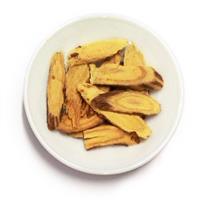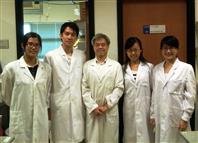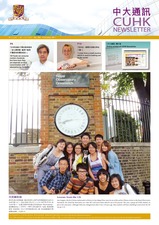Detoxification, which means the removal of toxic substances from the body for better health, is very much in fashion. The number of popular detox agents is overwhelming. Where do toxicities come from? How are they removed? Prof. Ho Wing-shing John of the CUHK School of Life Sciences, explains, ‘All foods we consume contain chemicals but how toxic they are depends on their concentration and absorption by the body. If too much is consumed, slowing down the speed of discharge, they accumulate and become what’s known as “toxicity” which is detrimental to health. The best way to detox is to be regular in habit, moderate in eating and drinking, and to consume more natural foods. Processed foods contain more chemicals and therefore should be avoided.’
Professor Ho adds that since the liver is the organ for the removal for toxicities, an injured or weak liver will affect the body’s ability to get rid of them. He began doing research on the prevention and removal of toxic substances in the US. When he joined CUHK in 1994, he continued to study how to strengthen liver function in order to boost the body’s detox capabilities. But during the process, he made a new discovery.
At the time, Professor Ho was looking for natural agents that would enhance the human body’s detox function and had thought that he should be able to find a singular active molecule in Chinese medicine, that treasure trove of medical knowledge with a long history. He went through a great number of books and documents in Chinese medicine, in particular, those on pharmaceutical formulae focusing on liver function, and found that they all contain the ingredient licorice root or Radix glycyrrhiza. Professor Ho explains, ‘There’s a saying that licorice root exists in nine out of ten formulae. It’s an important medicinal usher in Chinese medicine, having the effect of moderating other ingredients. That’s why it’s used so widely.’
The fact that licorice root is a much studied ingredient did not stop Professor Ho from embarking on his research. He extracted various active components from the plant, and tested them on different liver cancer cells in the laboratory. He had acquired many liver tumour cells, rats’ and humans’, those induced by hepatitis B, for use in testing the efficacy of licorice root extracts.
‘We extracted and did tests with active ingredients from a selection of 40 Chinese herbs related to liver function, including Hedyotis diffusa, Phyllanthus urinaria Linn, Scutellaria barbata D. Don, and what are commonly known as snow lotus herb and black mustard seed. Progress was slow at first but with more graduate students joining, it picked up. We did repeated tests, and results accumulated.’
After preliminary achievements in the Petri dish, Professor Ho and his team began doing tests on rats, and after much hard work, received encouraging results. They found that preparations made from Agrimonia pilosa Ledeb, Andrographis paniculata, and Radix gentianae are very effective in treating liver tumour, while a certain licorice root essence is good for combating prostatic tumour. These are substantiated through repeated tests on rats, and have passed toxicity and mechanism tests. They also observed that another licorice root preparation is effective on liver tumour, but it has yet to be tested on rats.
From studying detoxification to the discovery that hope for removing tumours can be found in licorice root, Professor Ho has put in a lot of hard work; his interest in Chinese medicine research has also grown. Besides tumour research, he discovered that a licorice root preparation is shown to have an effect on stomach ulcers in rats. His greatest wish is to have the financial support to carry out pre-clinical trials. ‘To be able to cure patients and do good to society is the most any scientist can ask for,’ he says. 
This article pertains to a medical subject but no medical advice to the reader is intended. Neither the writer, editor, publisher nor the University will accept any responsibility for liabilities arising from any action being taken by anyone on the basis of this article, including but not confined to the administration of drugs or undergoing treatment.



































































































































































Social Bookmarks